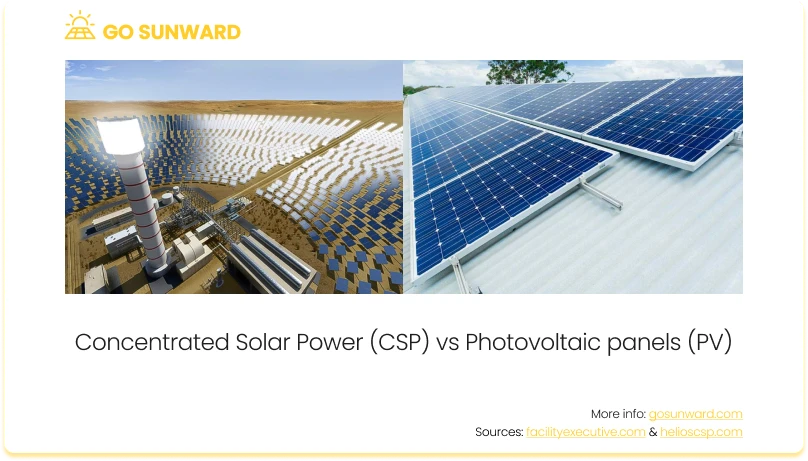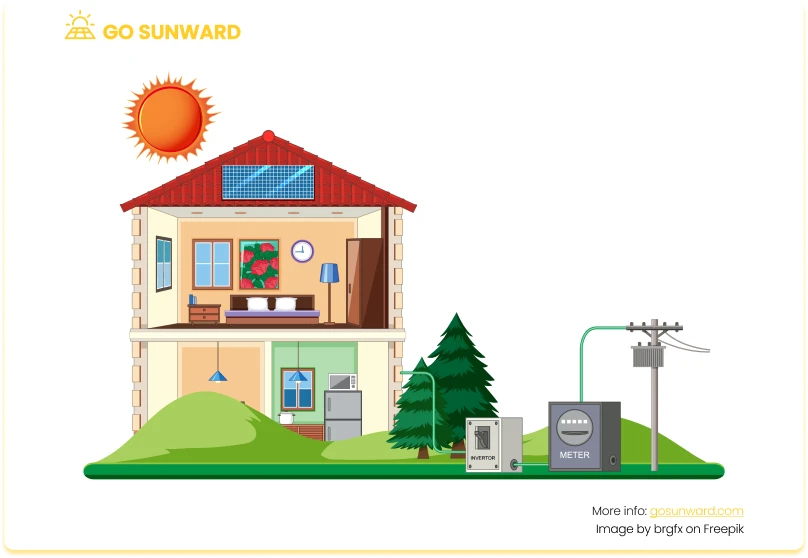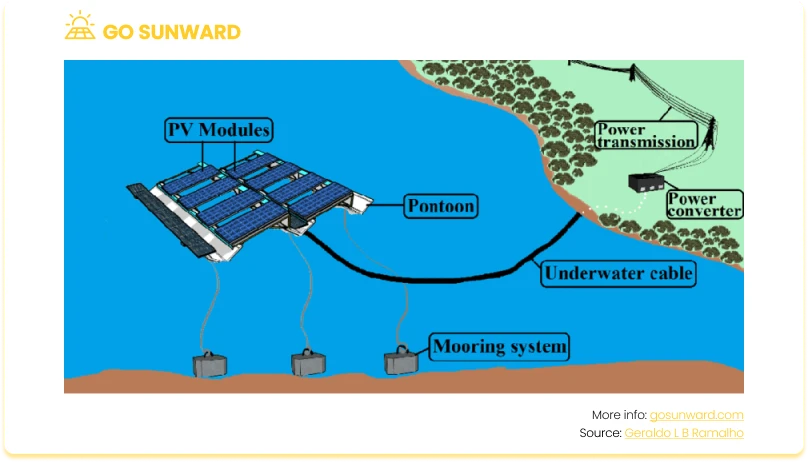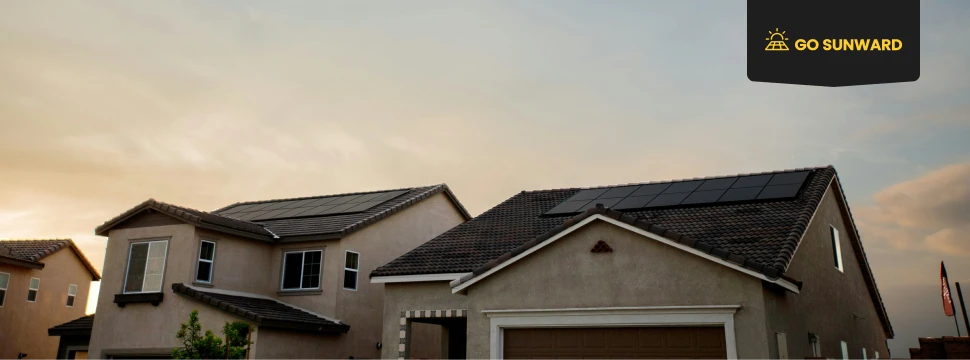How Much Energy Does A Solar Panel Produce?
In the pursuit of sustainable energy solutions, solar panels have emerged as a practical and environmentally friendly choice for electricity generation. However, understanding the precise energy output of a solar panel system can be a crucial consideration for homeowners, businesses, and policymakers alike. In this article, we aim to provide a straightforward exploration of the factors that impact solar panel energy production. We also offer insights into how you can estimate the electricity your solar panels are likely to generate. Before we delve deeper into the question: ‘how much energy does a solar panel produce’, we first need a brief recap on how exactly solar energy is produced from panels.
Solar Energy 101
There are two main types of solar power: solar photovoltaic (PV) and Solar Concentrated Solar Power (CSP). Both technologies harness solar energy to make electricity, but they do so through different mechanisms. CSP relies on heat to produce steam and drive a turbine, while PV directly turns sunlight into electrical energy using semiconductor materials.
Solar CSP systems use mirrors or lenses to concentrate direct sunlight onto a central receiver. The concentrated heat generates steam, which drives a turbine connected to a generator. The generator produces electricity as it spins, converting the thermal energy into electrical energy.
Solar CSP is often used in large power plants and includes thermal energy storage for continuous electricity production. Even when the sun is not shining.
Solar PV systems use solar panels made of photovoltaic cells, which directly convert sunlight into electricity. When sun hits the PV cells, it excites electrons, creating an electric current. An inverter then converts the direct current (DC) produced by the panels into alternating current (AC), which is usable in homes and businesses.
Solar PV is widely used in homes, commercial, and utility-scale applications and can be grid-tied or off-grid.

How Much Energy Does A Solar Panel Produce: Various Factors At Play
Due to the unique nature of each solar panel system, it is difficult to say how much electricity or energy it will produce. In fact, several factors influence how much energy a solar panel system produces:
- Sunlight Availability: The amount of sunlight your location receives is a crucial factor. Areas with more sunshine generally produce more energy.
- Panel Orientation: The direction and tilt of your solar panels affect energy production. Panels facing south at an optimal tilt angle for your latitude tend to produce the most energy.
- Shading: Shade from trees, buildings, or other obstructions can significantly reduce solar panel efficiency.
- Panel Efficiency: High-quality solar panels can convert more sunlight into electricity.
- Temperature: Solar panels can become less efficient in very high temperatures. However, some advanced panels have been designed to handle heat better.
- System Size: Larger solar panel systems, like a solar array, produce more electricity.
- Dirt & Debris: Dust, dirt, and bird droppings can accumulate on solar panels and reduce their efficiency. Regular cleaning helps maintain performance.
- Inverter Efficiency: The inverter converts DC electricity from the panels into AC electricity for household use. An efficient inverter can maximize energy production.
- Geographical Location: Your latitude and climate affect the angle and direction of your panels. Some regions may have better solar potential than others.
- Time of Day and Season: Solar panels produce more energy when the sun is directly overhead, and the days are longer, such as during summer.
- System Age: Over time, solar panels may degrade slightly, reducing their efficiency. Regular maintenance can mitigate this.
- Electrical Losses: Electrical losses occur during energy conversion and transmission within the system. High-quality components and proper installation can reduce these losses.
- Government Incentives: Local incentives, tax credits, and net metering policies can influence the financial viability of solar panel installations.
- Energy Storage: The use of energy storage solutions, such as batteries, can help capture and store excess energy for later use, increasing self-consumption and energy independence.
- Electricity Rates: The cost of electricity from your utility company and the structure of electricity rates can affect the financial benefits of solar energy.
How Much Energy Does A Solar Panel Produce: Size Matters
A typical residential solar panel system in the United States falls in the range of 5 to 10 kilowatts (kW) in size. The 5 kW to 10 kW range is considered average for residential installations in the US. However, there is flexibility to install systems that are smaller or larger, depending on the specific energy needs and available space of the household. For example, a homeowner might opt for a 7 kW system to strike a balance between energy production and budget considerations.
The size of an average residential solar panel system and the panel wattage can vary widely depending on a few key factors, including the household’s energy needs and available roof or ground space for installation.
How Much Energy Does A Solar Panel Produce: Hourly, Daily, Annually
As highlighted above, the energy production of a solar panel system varies significantly, depending on factors such as the location, panel efficiency, sunlight availability, and system size. That said, let’s break down the typical energy production of a solar panel system in various timeframes and units:
Hourly Energy Production: On an hourly basis, the energy output of a solar panel system can fluctuate significantly. It depends on the angle and orientation of the panels relative to the sun, which changes throughout the day. On a clear day with optimal conditions, a standard residential solar panel system (about 5 kW) can produce around 20 kilowatt hour (kWh) per day, which translates to roughly 0.8 kWh per hour during peak sun hours.
Daily Energy Production: The amount of daily energy production is influenced by sunlight hours and intensity. In regions with abundant sunshine, a 5 kW residential solar panel system can generate approximately 20-30 kWh per day. However, this figure can be lower in cloudy conditions.
Annual Energy Production: Over the course of a year, a 5 kW residential solar panel system in a sunny location can produce approximately 7,300 to 11,000 kWh annually. However, this figure can vary greatly depending on location and local weather patterns.
Can Solar fully power a house?
The short answer is yes. A single solar panel doesn’t produce enough energy to power much, but many solar panels combined might shock you. Can solar fully power a house?
How Much Energy Does A Solar Panel Produce: Real-World Example
Let’s consider a real world example of a residential solar panel system in the United States.
- House Size: The house in question is a typical suburban home with an approximate size of 2,000 square feet. It’s a single-family residence located in a sunny region, such as Southern California.
- Solar Panel System Size: To meet the energy needs of this household, a 7 kW (7,000-watt) solar panel system was installed on the roof. This system includes around 20 to 24 solar panels, depending on the panel’s wattage and efficiency. Solar panels are positioned optimally to capture sunlight throughout the day.
- Electricity Produced: In this sunny location, the 7 kW solar panel system can produce approximately 9,800 kWh (kilowatt-hours) of electricity per year. This estimate takes into account the average sunlight hours and intensity in the region.
- Electricity Consumed: The household’s annual electricity consumption before the solar panel system was approximately 12,000 kWh. This usage covered all the household’s electrical needs, including lighting, appliances, heating, cooling, and other typical uses.
With the 7 kW solar panel system in place, the household could generate a significant portion of its electricity needs directly from sunlight. The system will help reduce the household’s reliance on the grid, resulting in substantial savings on electricity bills. The remaining electricity requirements not met by the solar panels would be sourced from the local utility during periods of low sunlight, such as at night or during cloudy days. Click here to find out if solar can fully power a house.
This example illustrates how a well-sized residential solar panel system can offset a significant portion of a household’s electricity consumption, leading to cost savings and a reduced environmental footprint. Click here to find out how to calculate how many solar panels you would need to install at your house.

Technological Breakthroughs
Future trends and technological breakthroughs hold the promise of revolutionizing the energy production capabilities of solar panels. These advancements can potentially usher in a new era of increased efficiency and enhanced energy output from solar photovoltaic systems.
Enhanced Efficiency:
Ongoing research and innovation are dedicated to improving the efficiency of solar panels. Novel materials, advanced manufacturing techniques, and optimized designs are all contributing to the development of solar panels that can convert a higher percentage of sunlight into electricity. The more efficient these systems become, the more energy they can generate. Making solar power even more economically attractive.
Tandem and Multijunction Solar Cells:
Breakthroughs in tandem and multijunction solar cells are poised to significantly impact energy production. By stacking multiple layers of semiconductors, these cells can capture a broader range of the solar spectrum. This approach promises to boost energy yield, especially in areas with varying sunlight conditions.
Bifacial Technology:
Bifacial solar panels, which can capture sunlight from both the front and rear sides, are gaining traction. They utilize reflected light from the ground and nearby surfaces to enhance energy capture. This technology is particularly advantageous in regions with high albedo surfaces, such as snowy environments.
Flexible and Transparent Panels:
The development of flexible and transparent solar panels opens up exciting possibilities for integrating solar power into a wide range of surfaces, including windows, building facades, and even clothing. These innovations expand the available surface area for energy generation, making it easier to harness solar power in diverse settings.
Smart and Integrated Systems:
Advancements in smart grid technology and energy storage solutions can further enhance the effectiveness of solar energy systems. Improved integration with energy storage, demand-side management, and grid infrastructure can enable more efficient energy usage and reduce wastage, maximizing the benefits of solar power.
Innovative Installation Practices:
Future trends may also encompass innovative installation practices, such as floating solar farms on bodies of water, solar canopies over parking lots, and solar-integrated agriculture. These approaches can optimize land use and increase energy production.

As breakthroughs gain momentum, they have the potential to turn solar energy into an even more sustainable source of electricity. Which meets the world’s growing energy demands and lowers the impact on the environment.
Conclusion
The energy production of a solar panel system is a dynamic interplay of various factors. These include location, system size, panel efficiency, and environmental conditions. A typical home solar panel system in the United States falls in the range of 5 to 10 kW, the exact size should be suited to individual energy needs and available space.
As solar technology advances, we should anticipate even greater improvements and increases in energy production. Emerging innovations, such as tandem solar cells and transparent panels, hold the promise of changing the solar energy landscape and making renewable power an even more integral part of our lives.
If you’re considering solar panels for your home, business, or community, it’s important to read up on important information. Particularly regarding costs, system size and technology types. Our Solar 101 article can help! With solar power’s clean, sustainable, and cost-effective attributes, it plays a pivotal role in our move toward a more environmentally friendly and energy-efficient future.




